How many times have you bought cilantro, shoved it into your crisper drawer, used it once, and then forgot all about it? I experienced the same thing until I learned these tricks in culinary school.
It’s a tragic thing to discover a bag of wet, browned cilantro in your fridge. So many good intentions for its use all lost due to improper storage. Luckily, storing it the right way is easy and takes only a few seconds of your time.
In culinary school and in restaurant kitchens, no food is wasted. That means you learn pretty quickly how to use and store every bit to make it last. You should treat your ingredients like that too. Fresh herbs are one of the easiest foods to waste, but also one of the easiest to store. Put on your chef’s hat (or your pretend one) and learn how to do it right.
How Long Does Cilantro Last?
Fridge: up to a week
Room Temperature: 2-3 days
Freezer: up to 1 year
Tips for Buying Fresh Cilantro
The fresher the cilantro at purchase, the longer it will last. Buying your cilantro at the farmer’s market or growing it yourself are the best ways to ensure freshness. If that’s not an option, don’t worry. Marina Chapparo, founder of Nutrichicos has a few recommendations.
First, look at the leaves. They should be bright green and full, not saggy. Saggy leaves indicate that the cilantro may be old. As for the stems, they should be bright green, relatively firm, and able to stand upright.
Ways to Store Cilantro in the Fridge
Fresh cilantro will last at room temperature for only a short amount of time, so unless you plan on using it all in a day or two, it’s best to use one of the storage methods below.
Treat cilantro like flowers.
Step 1: Remove the twist tie that’s wrapped around the stems and discard.

Step 2: Rinse the leaves and stems under cool, running water and pat them dry. Be sure to thoroughly dry to prevent spoilage.
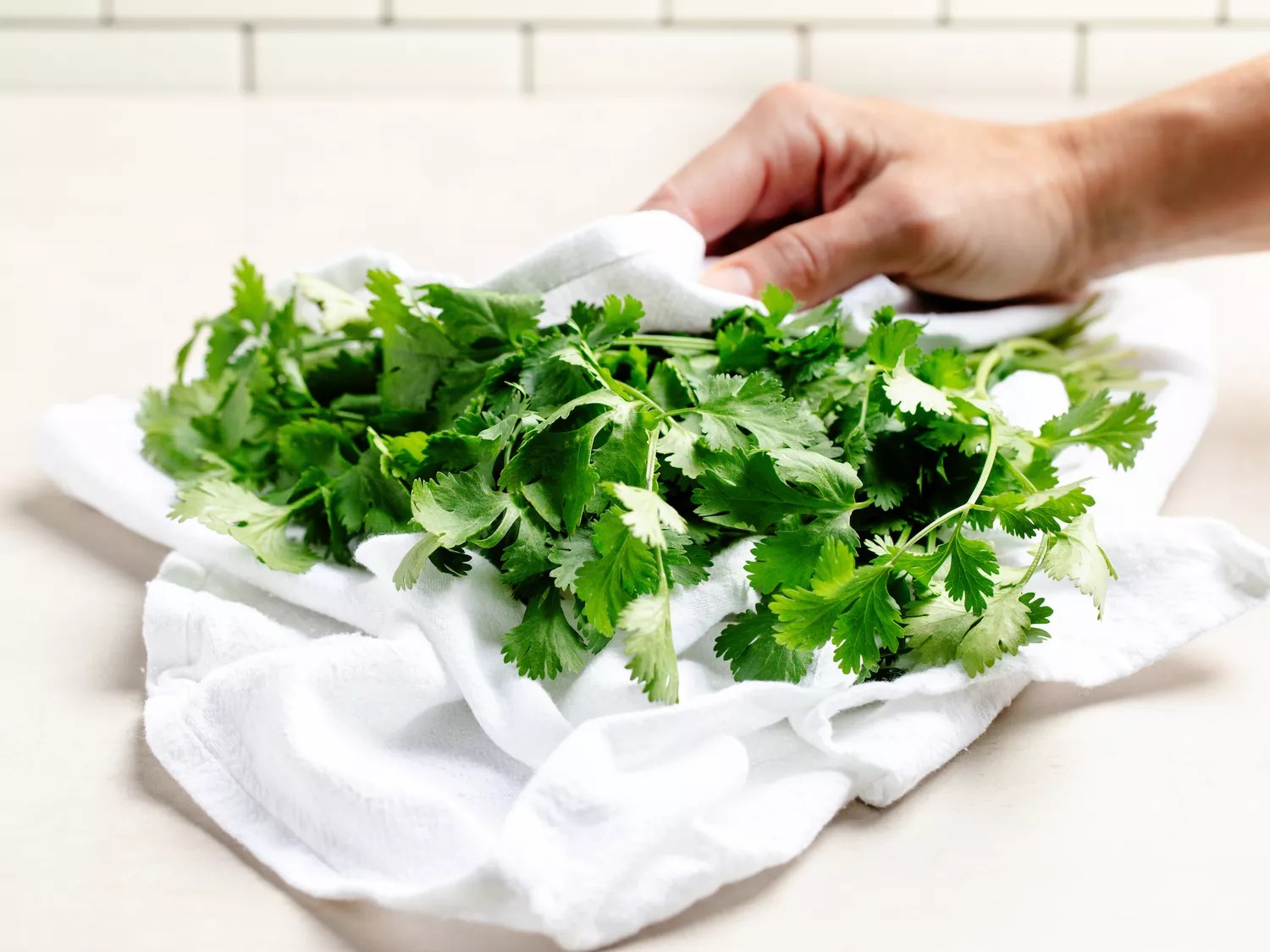
Step 3: Trim about an inch off the stems.
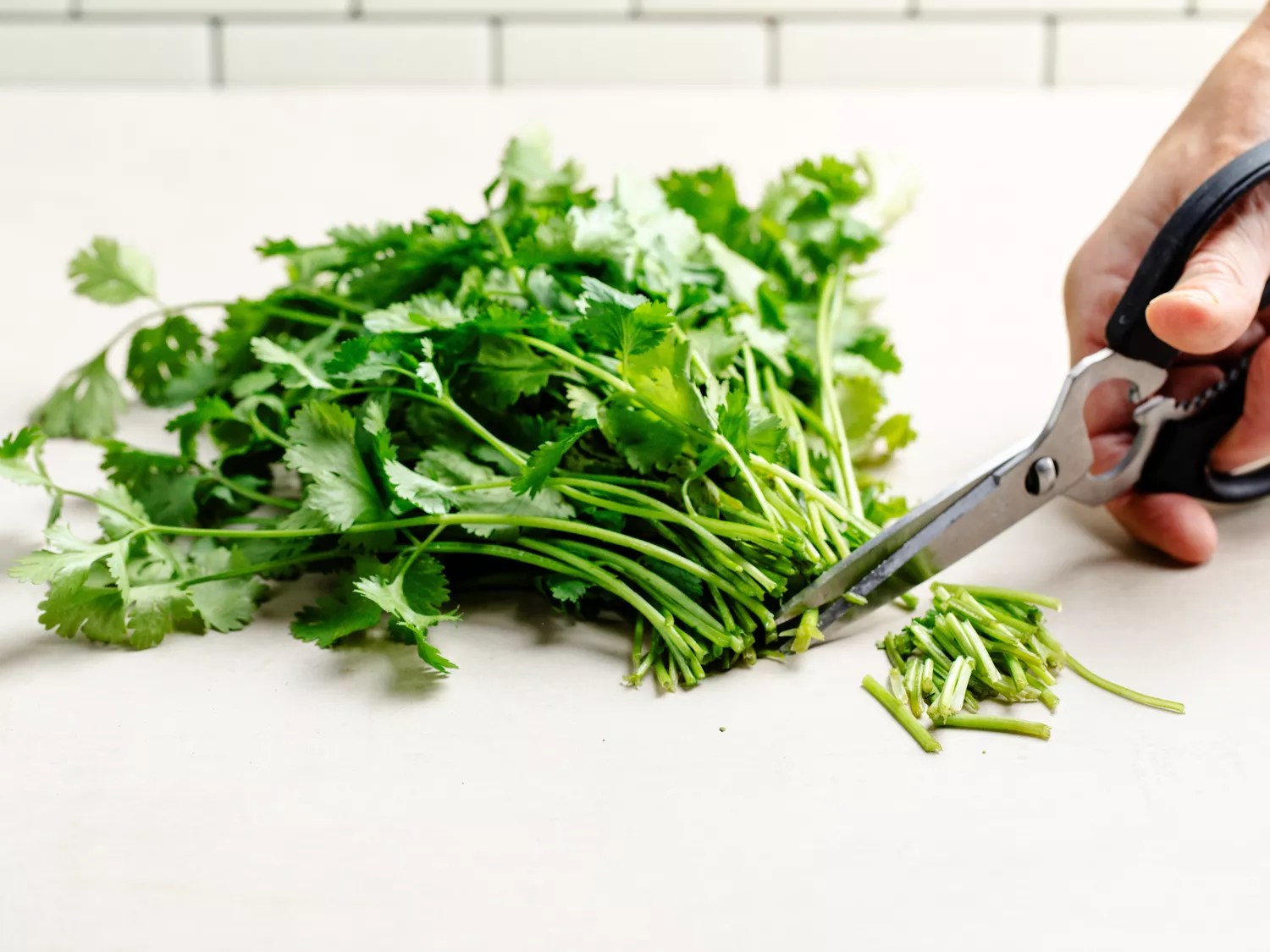
Step 4: Stand the trimmed cilantro in a glass (a canning jar or small vase works well), and fill with enough water to cover the stems by one or two inches. Cover the leaves lightly with plastic wrap or a plastic bag (the one you put it in when you bought it works well) and store on a shelf in your refrigerator. Change water every few days.


Place it in a resealable bag.
Step 1: Remove the twist tie that’s wrapped around the stems and discard.
Step 2: Rinse the leaves and stems under cool, running water and pat them dry.
Step 3: Wrap cilantro in clean, damp paper towels.

Step 4: Place wrapped cilantro in a zip-top food storage bag, removing any excess air before sealing. Store in the vegetable crisper drawer.

How to Store Chopped Cilantro
Step 1: Remove the twist tie that’s wrapped around the stems and discard.
Step 2: Rinse the leaves and stems under cool, running water and pat them dry. Use a sharp knife to chop cilantro leaves and stems.
Step 3: Line an air-tight food storage container with clean, lightly dampened paper towels, add chopped cilantro.
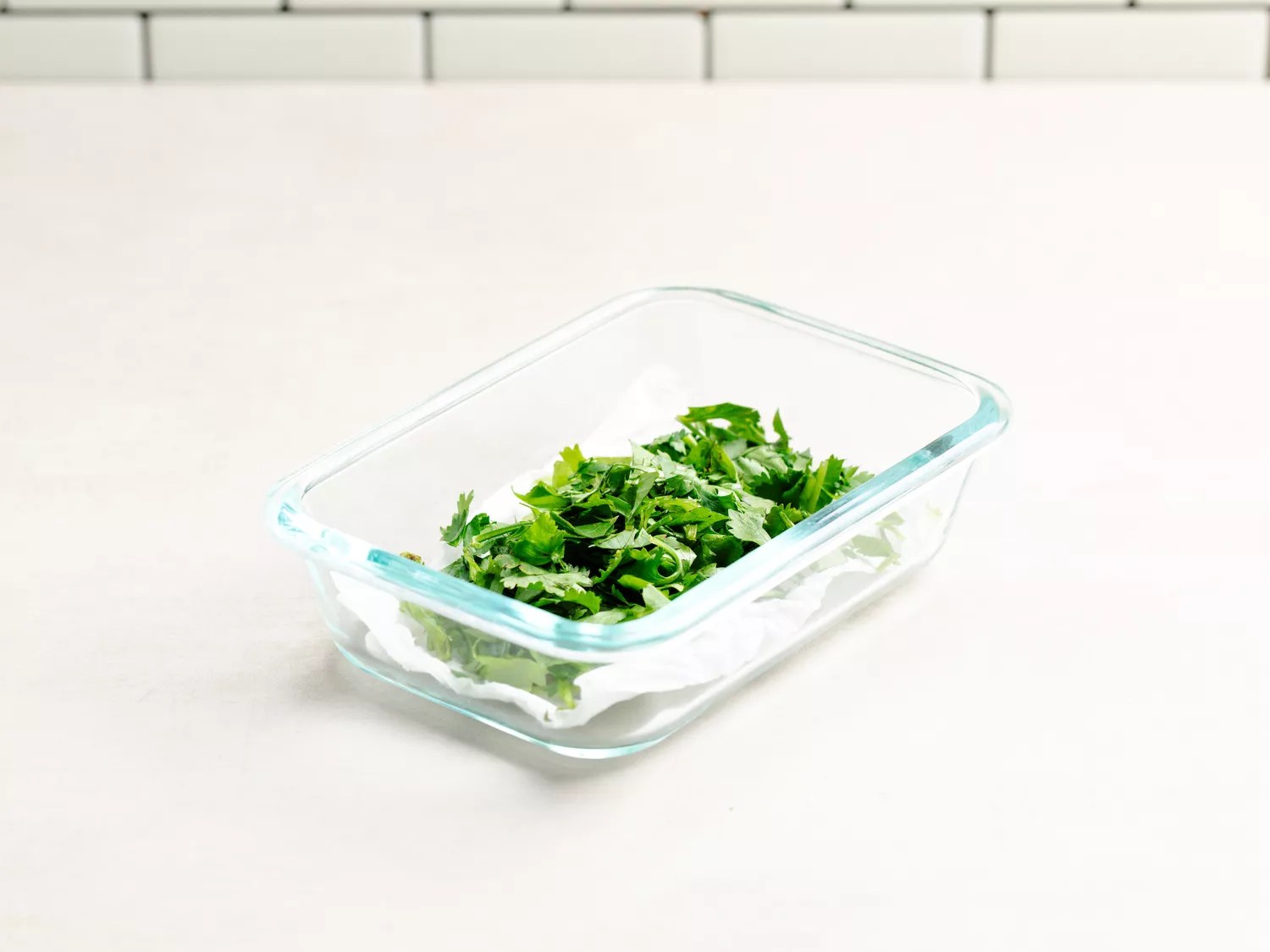
Step 4: Cover with another layer of clean, lightly dampened paper towels, then cover with the lid. Store in the vegetable crisper drawer.
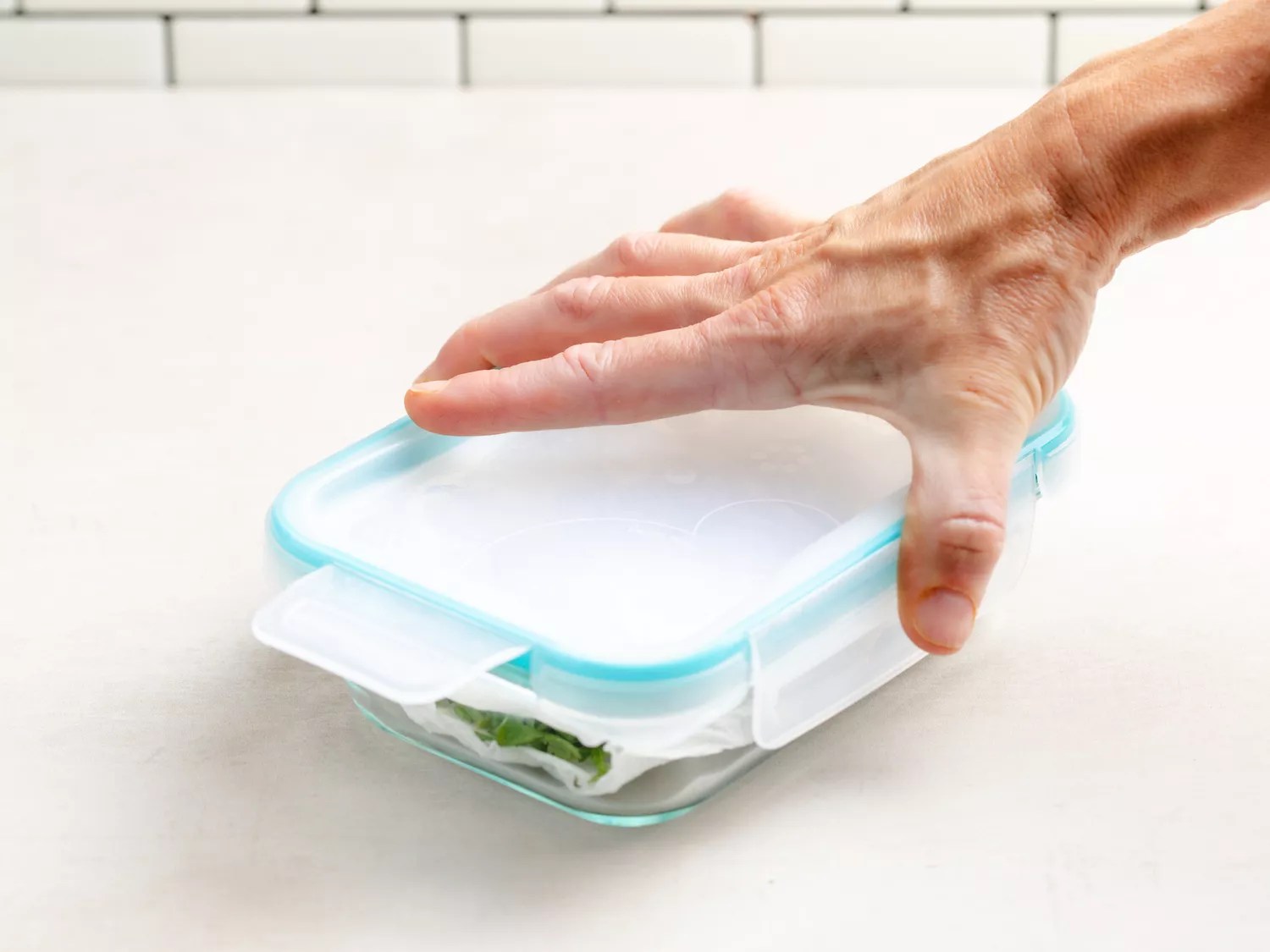
How to Freeze Cilantro
Step 1: Remove the twist tie that’s wrapped around the stems and discard.
Step 2: Rinse the leaves and stems under cool, running water and pat them dry.
Step 3: Chop the cilantro and add it to ice cube trays.
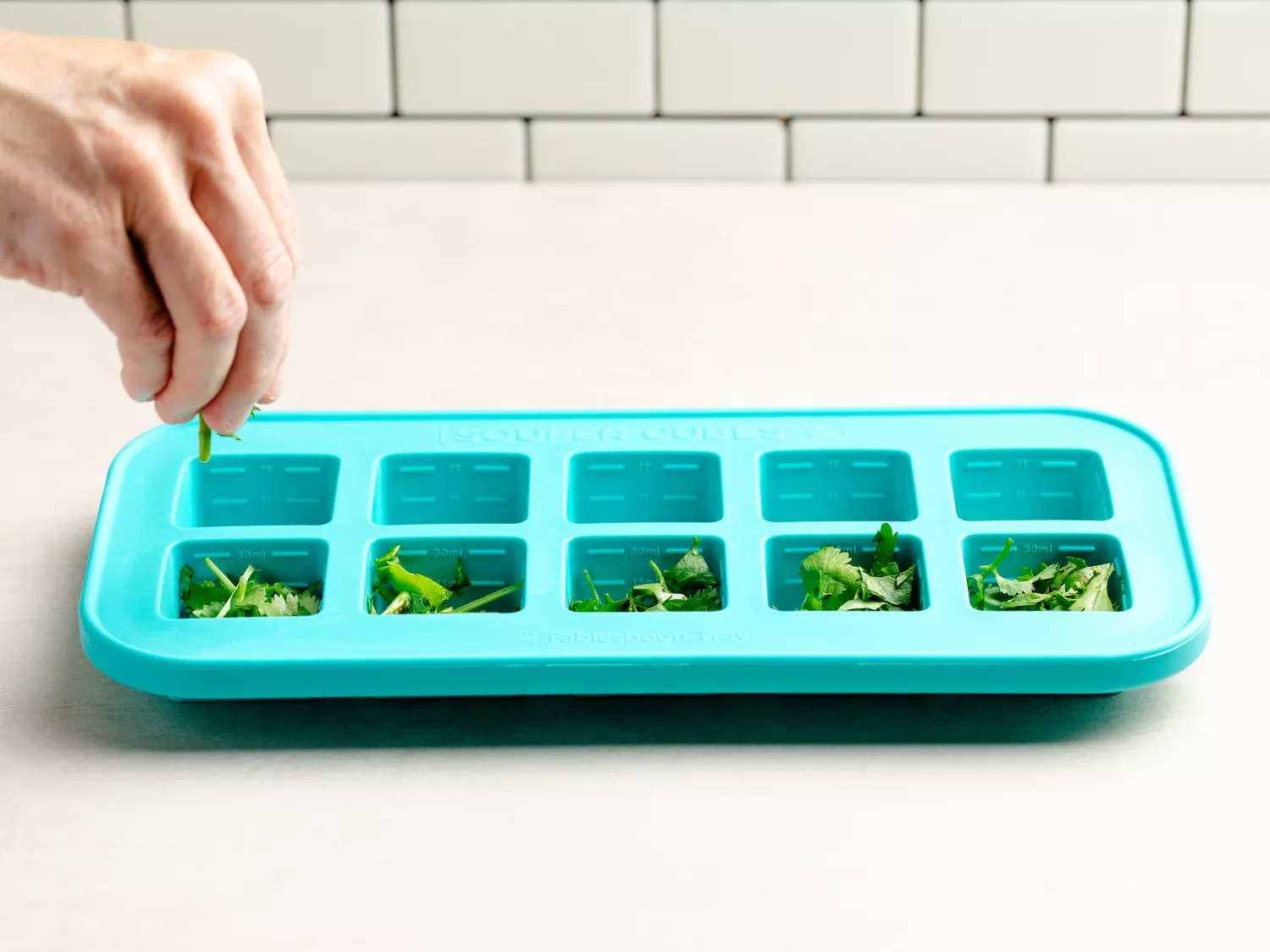
Step 4: Cover with olive oil to fill each cavity and freeze. Once fully frozen, remove cubes from tray and store in a freezer safe container. Label and date the container.

How to Tell if Cilantro Has Gone Bad
Since cilantro has such fragile, thin leaves, you’ll be able to see pretty clearly when it’s gone bad. You’ll notice that the leaves will turn brown and become wilted, says Chapparo, and it will have lost its “lemony, fresh scent.” Unfortunately, you can’t use spoiled cilantro, but it can be composted.




